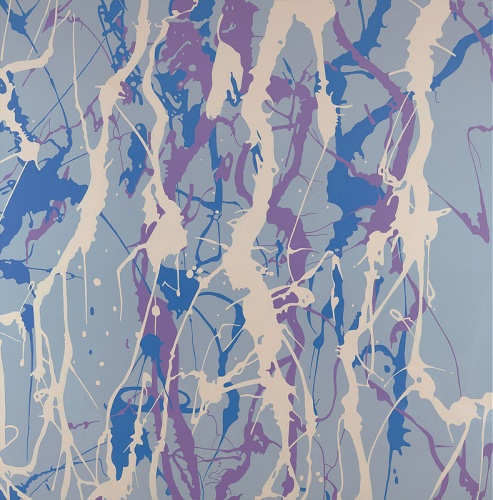
- Untitled A
- Acrylic on Canvas
- 36" X 40"
- 2006









Notes on Anti-Action Painting »
Until the advent of Expressionism, painters had steered clear of improvisation and spontaneity, preferring well thought-out, predetermined compositions. The abstract Expressionists made a virtue of uncertainty, which paralleled the discovery of quantum mechanics in the field of physics. Some painters are temperamentally suited to art as exploration, while others need to know their exact destination beforehand. David Harry is the latter type, but he is fascinated with the former, like a golfer who is astonished at the exploits of a skydiver.
Harry has been at work on a major series that analyzes a common Abstract Expressionistic component, and Jackson Pollack’s signature technique, the drip or the splatter. Although Pollack gave direction to his drips, there was an important element of chance in how the paint behaved when it hit the cotton duck, and it is this junction of chance and control that makes his art so compelling. Harry, in a postmodernist endeavor, takes the drip/splatter as his starting point, and from there builds a formal labyrinth of form and color. In his hands it has the animation of strands of DNA under a microscope. They do not sit in an orderly fashion, like Pollack’s color, which he applied systematically one over the other. In Harry’s painting, a yellow that in one area of a painting is in the foreground might appear in the middle ground or background in other areas.
The artist’s precise hand describes one of art’s most inexact techniques, and there is wry humor in this. In addition to the simultaneous appearance of advance in painting and science, as mentioned above, there was also innovation in music in the 1950s, particularly in small band jazz. Harry’s work has the syncopated, improvisational quality of this music. The Abstract Expressionists used the full force of their arms and needed large canvases for this. Harry’s version of the extemporaneous is cerebral, not physical, and therefore he forgoes large canvases and works on the easel-sized picture. Most painters’ works give the impression that the image continues outside of the borders of the canvas, and Harry’s art implies this with unusual vigor so that his modestly sized canvases seem vast. Through manipulation of color contrasts the artist also suggests deeply receding space. That this is achieved with a totally flat style painting is stunning.
—Nicholas Bergman